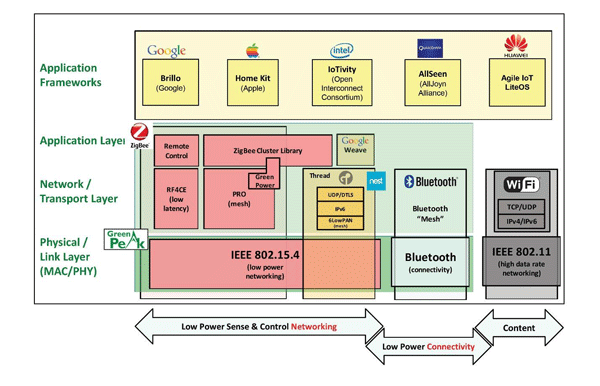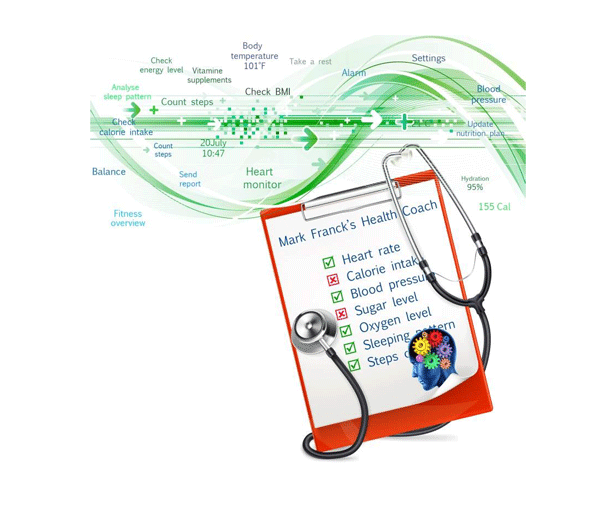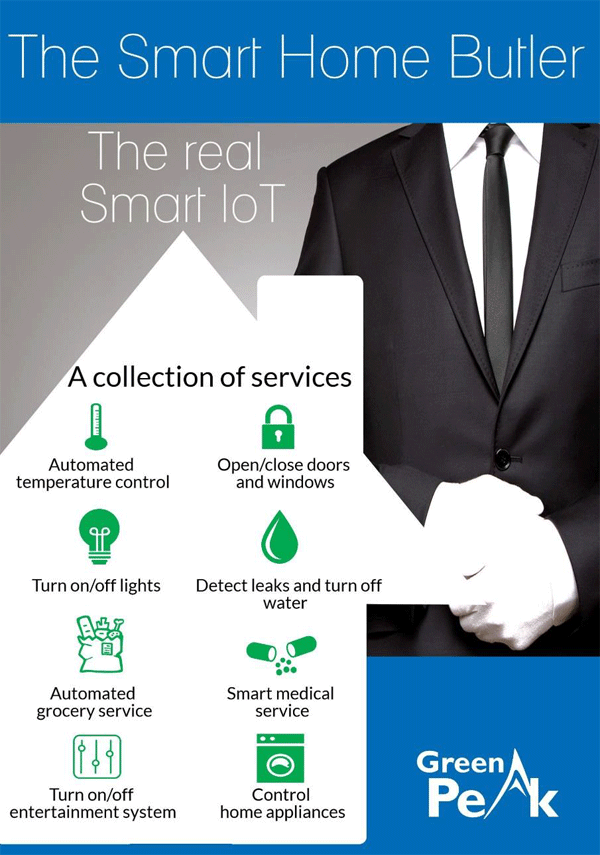There is a better way to market the Smart Home and Consumer Internet of Things
Almost every technology media outlet – consumer, trade and engineering – has been writing about the ongoing avalanche of technology for the home. It is the next big thing. Incredible predictions are being tossed out by the analyst community and industry players.
Deloitte predicts “in 2015 one billion wireless Internet of Things (IoT) devices will be shipped, up 60% from 2014, and leading to an installed base of 2.8 billion devices.”
Gartner says “4.9 billion connected things will be in use in 2015 (up 30% from 2014), 25 billion by 2020.”
IDC says “In 2015, 4,800 connected end points are added every minute. This number will grow to 7,900 by 2020. The installed base of the IoT devices will grow from 10.3 billion devices in 2014 to 29.5 billion in 2020.”
“By 2020, more than 5 billion people will be connected, not to mention 50 billion things”, according to World Economic Forum.
Cisco says “The IoT is a world where up to 50 billion things (or devices) will be connected to the Internet by 2020; or, the equivalent of 6 devices for every person on the planet.”
These are big numbers and amazing forecasts for the future growth of the IoT market. Sounds wonderful – no need to worry, right?
However, these cheerful predictions might not come to pass as there is a growing undercurrent of industry grumbling and complaining that the IoT and Smart Home revolution seems to be taking a lot longer than it should. Why?
There are several reasons but a key issue has been the infighting among the CE industry behemoths about whose protocols and platforms will be the base of this new technology. How do we make all these things talk to each other? There are many players all battling – and new ones are popping up all the time. This is creating an atmosphere of uncertainty and mistrust. As a result, the device makers and the solution providers are confused and don’t know which way to turn.
Whose technology protocols should these manufacturers incorporate into their gear? Should they adopt ZigBee, Apple’s HomeKit, Allseen Alliance/AllJoyn, or Intel’s Open Interconnect Consortium? Other 802.15.4 technologies? There are too many competing choices.

Instead, to protect against future technology changes, maybe the device makers should design in wireless connectivity chips and software that will work with a variety of protocols? That’s complicated and expensive.
Also, as you can imagine, if the device, appliance and system developers are confused about future directions, the actual end users and application designers are even more bewildered.
This market battle that is slowing down the adoption of the IoT, has been covered by the various pundits and analysts covering this emerging market.
Do Consumers Really Want an IoT
Another reason why the Smart Home revolution seems to be taking much longer is the fact that the terms themselves – Smart Home and IoT – are ill conceived and not really very appropriate.
Too many people – industry leaders, media, analysts, and end users – have confused the concept of “smart” with “connected”. Most devices – labeled “IoT” or “smart” – are simply connected devices. Just connecting a device to the internet so that it can be monitored and controlled by someone over the web using a smart phone is not smart. Yes, it may be convenient and time saving, but it is not “smart”.
Smart means intelligence. Smart means the device and solution can analyze the incoming data and then make a decision to control or activate a device within the home or facility – without having a human being required to press the on/off button. Most current so-called smart devices are little more than internet-enabled remote controls.
In the home, “smart” means a network of sensors in the house that measures and monitors the environment – more than just “what is the temperature”. This can include who is in the home, where are they in the home, what is the “normal” activity in the home at that particular day and time? And then, by using intelligence and information that the system has learned about the residents, it makes a decision whether or not to open windows, turn on or off the heating, airco, lights or entertainment system, to activate the security system, etc. If there is a leak in the water system, it turns off the water and notifies a repair person.
What about the so-called wearables? Many people are currently strapping “smart” bands on their arms that monitor their health and condition. However, these are not smart. If they were truly smart, the bands would transmit their data to a personal online coach which would interpret the data and then provide direction and motivation to the person to change their behavior in order to live a healthier life.

Sell Services – Not Connected Things
Imagine the concept of a butler. The reason rich people hire someone like a butler is that service professionals are trained to recognize what is happening in the home and to provide the appropriate services. They don’t need to be programmed to open the door or turn on the lights.
In a similar way, the industry should market the IoT as an Internet of Services instead of an Internet of Things. Instead of focusing on a smart door lock, a smart windows sensor, an IoT hub or gateway – we should shift our marketing focus to the bigger picture. What can the Smart Home butler do for us to make our lives safer, easier and more efficient?
Aside from early innovators who will buy and install anything new despite the expense and difficulty of making it all work, most consumers don’t want to buy and install a so-called smart device that requires the user to program and troubleshoot it to get it started. Consumers don’t want a product that requires them to constantly monitor and manage it. Instead, the consumer wants smart services that do all of that, automatically and autonomously.
These smart services can include home security, personalized home lighting and environmental control, automated ordering and purchasing of supplies and groceries for the home. Imagine a smart medical service that not only tracks when and how the people in their home take their medicines, but also tracks the volumes and automatically orders refills when the inventory drops. Even better, the smart medical prescription service analyzes the combination of drugs the person takes, comparing it against a database of adverse drug combinations. The medical service could also monitor their vital signs in case any negative or dangerous conditions occur.
Another service, already on the market, is called Senior Lifestyle solutions. It learns how a senior citizen lives in their home and then sends an alert to their family or caregivers if something in the home changes, i.e., the senior is not getting out of bed or is not making their breakfast at the usual time.
There are many minor and tedious tasks that we do to maintain our homes and improve our lifestyle that could be outsourced to our “personal Smart Home butler”.
Smart Home Butler and Service Providers
By marketing services, instead of connected things, we now open the door to organizations that specialize in delivering services – with technical, environmental and connectivity expertise – to come in and manage these services. Instead of trying to install and maintain it themselves, many consumers would prefer to pay a small fee to a service provider that would install the devices and network, and then manage it for the resident.
The Smart Home butler – a collection of smart services – uses a network of Sentrollers and cloud intelligence to make our lives safer, easier and more efficient.

Right now, the emerging Smart Home industry expects the resident to research the various technologies, select the right option, negotiate the best price, take them home, and install the system. Once installed the system has to be programmed, managed and monitored. Most people would prefer paying a small monthly fee so that they would not have to handle that level of complexity.
How to reduce service costs for the consumer? Service providers could install and manage the system for free or inexpensively. To cover the cost of the devices, the cloud intelligence and the entire service, the service provider could collect lifestyle data of the end user – i.e., how the residents live their lives, what is their schedule, what products do they buy, when do they consume the most energy – and then, sell that data. This business concept works well for many web-based businesses – why not enable it for Smart Home services as well?
It is time to take a new look at how our technology industry approaches and markets the potential of the Smart Home – the Smart IoT. By giving consumers, as well as businesses, governments and corporations what they want – effective service applications as well as complete managed solutions instead of DIY things – our tech industry can further accelerate the growth of “smart” into the world, thereby making our lives safer, more efficient and more comfortable; all for less cost.






